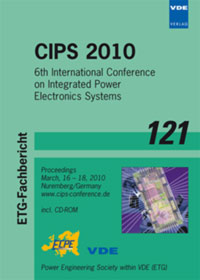Interface Degradation of Al Heavy Wire Bonds on Power Semiconductors during Active Power Cycling measured by the Shear Test
Konferenz: CIPS 2010 - 6th International Conference on Integrated Power Electronics Systems
16.03.2010 - 18.03.2010 in Nuremberg, Germany
Tagungsband: CIPS 2010
Seiten: 6Sprache: EnglischTyp: PDF
Persönliche VDE-Mitglieder erhalten auf diesen Artikel 10% Rabatt
Autoren:
Goehre, Jens; Schneider-Ramelow, Martin; Lang, Klaus-Dieter (Fraunhofer IZM, Berlin, Germany)
Geißler, Ute (Berlin University of Technology, Berlin, Germany)
Inhalt:
Wire bonding is still the dominant interconnection technology for power semiconductors in power modules, e.g. for automotive or photovoltaic applications. In the past, many research activities have occurred in the field of reliability of power modules, where the life time of the complete module is affected by bond wire lift offs, heel cracks and other failures. Less effort was spent for investigating the degradation process at the wire bond itself. This paper addresses a new approach and focuses on the investigation of the cracks in the interface region between the die and the wire by using the shear test. These cracks form after several thousand temperature swings due to CTE mismatch and ultimately lead to wire bond lift off. New results of active power cycling with different temperature amplitudes and medium temperatures will be discussed. Shear tests have been carried out in regular intervals to monitor the degradation of the 400 µm wire bonds on power MOS-FETs. It was found out that the rate of the shear force reduction was mostly dependent on the amplitude of the temperature cycling. A significant effect of different medium temperatures could not be identified. These results will contribute to the development of an enhanced life time model for heavy wire bonds on power semiconductors.


